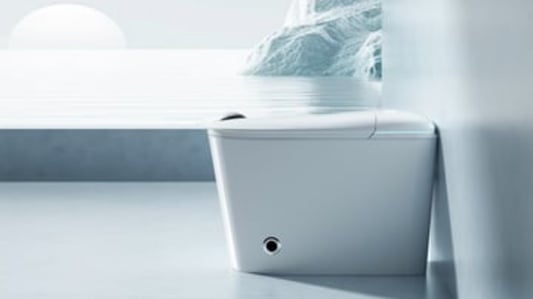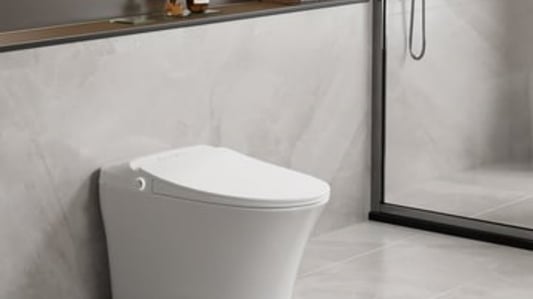The grohe smart toilet: An IntroductionWhen it comes to bathroom upgrades, homeowners now want a next-generation experience. Enter the Grohe Smart Toilet - a cutting-edge bathroom appliance that promises to take your daily ablutions to the next level of luxury. Offering advanced features that go beyond just flushing, it offers a unique experience that can improve your lifestyle.Design and StyleThe Grohe Smart Toilet is a modern piece of bathroom infrastructure that can add value and classiness to any lavatory. It features a sleek design with a clean, squared-off look that gives a futuristic vibe. With its minimalist design, it is simple to install and fits with most spaces. Available in different colors and finishes, it can add an element of style to your bathroom.Smart TechnologyThe Grohe Smart Toilet is laden with sophisticated features that make it stand apart from traditional toilets. Its smart technology feature allows it to open and close the lid and seat automatically, which is a convenience that’s hard to go without once you get used to it. Efficient sensor technology contributes to a touch-free experience and also provides quick and effective cleaning. The smart toilet is an innovation that deserves attention.Hygienic StandardsThe Grohe Smart Toilet features advanced technology that promotes hygiene in the bathroom. It boasts an automatic seat that opens and closes without any touching required. Besides, the toilet comes with two separate spray wands, offering a water spray for cleaning for both front and back. These features enhance personal hygiene and make the cleaning of the toilet a hassle-free task.Environmental-Friendly TechnologyThe Grohe Smart Toilet takes a step towards promoting eco-friendly living by incorporating features that save water usage. Its intelligent water management system features two options for flushing, which helps in conserving water. Its ‘small flush’ option uses less water when disposing of liquid waste, reducing the amount of water consumption while still maintaining hygiene standards.Comfort and ConvenienceThe Grohe Smart Toilet promises uninterrupted comfort to the user. Its heat technology provides a seat that is warm when you sit, allowing for comfortable execution of long sessions. The customizable water temperature feature allows comfortable cleaning, and the automatic lighting system contributes to overall bathroom ambiance.Child-Friendly and SafeWith the Grohe Smart Toilet, parents don’t have to worry about their children’s safety. Its built-in sensor system automatically recognizes and adjusts the seat to the user's size and is programmed to close slowly, reducing the chance of injury to small children. Besides, the touch-free features of the toilet prevent the spread of germs, keeping the family safe from infections.Easy MaintenanceThe Grohe Smart Toilet is designed to make the cleaning process more accessible and straightforward. With features like smooth surfaces, the toilet is easy to clean, and the touch-free systems reduce germ cumulative on its crevices. The self-cleaning system saves time and effort, making maintenance a breeze.InstallationThe installation of a Grohe Smart Toilet is a breeze. It comes with comprehensive instructions and can be easily set up without any professional help. With its minimalist design, it can fit into any bathroom without making it crowded. The installation of this next-generation toilet could upgrade your lavatory experience in no time.Cost-effectiveThe Grohe Smart Toilet may appear to be costly, but it is an excellent investment in the long run. With its water-saving features, it can help reduce your water bills significantly. Additionally, reducing the spread of germs and infections helps to reduce medical bills.Quote Inquirycontact us
- Home
-
Product
-
Smart toilet
- Foot Induction Flush For Hotel B18
- Automatic Flush nozzle clean B31
- One Touch Warm Air Drying Foot Induction B32
- One Piece Instant Heating Auto Flush B33
- Automatic flip B52
- Instant Heated auto flush B92
- Luxury Self Clean C18
- Instant Heated with remote control C28
- Foot Sensor Flush C68
- Heated seat with warm water U11
- Automatic Flush U13
- Luxury Foot Induction Flush U14
- One Piece Gesture Auto flip B51
-
Smart toilet seat
- Multi-layer Parquet
- Decorative Mouldings
- Window
-
Smart toilet
- Company
- Case
- Blog
- Contact us










